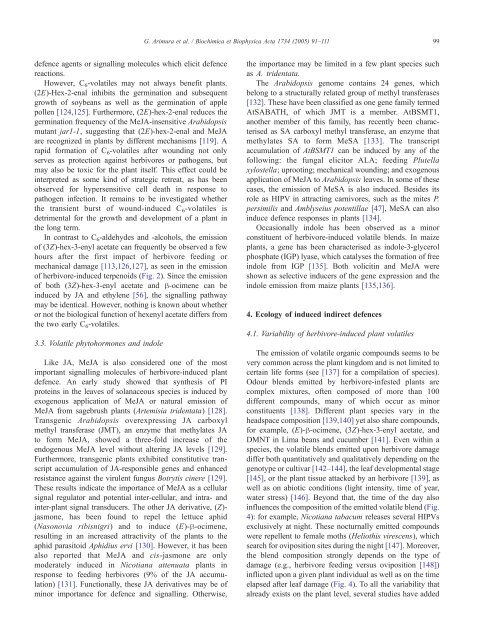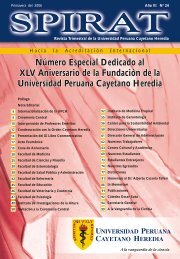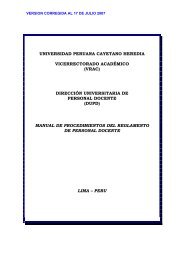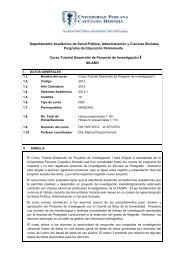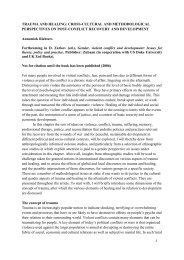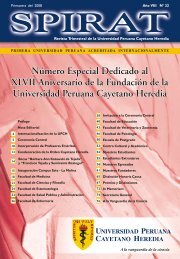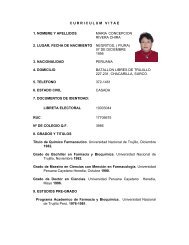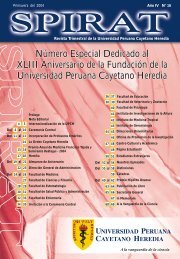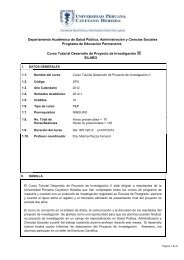Herbivore-induced, indirect plant defences - UPCH
Herbivore-induced, indirect plant defences - UPCH
Herbivore-induced, indirect plant defences - UPCH
You also want an ePaper? Increase the reach of your titles
YUMPU automatically turns print PDFs into web optimized ePapers that Google loves.
G. Arimura et al. / Biochimica et Biophysica Acta 1734 (2005) 91–111 99defence agents or signalling molecules which elicit defencereactions.However, C 6 -volatiles may not always benefit <strong>plant</strong>s.(2E)-Hex-2-enal inhibits the germination and subsequentgrowth of soybeans as well as the germination of applepollen [124,125]. Furthermore, (2E)-hex-2-enal reduces thegermination frequency of the MeJA-insensitive Arabidopsismutant jar1-1, suggesting that (2E)-hex-2-enal and MeJAare recognized in <strong>plant</strong>s by different mechanisms [119]. Arapid formation of C 6 -volatiles after wounding not onlyserves as protection against herbivores or pathogens, butmay also be toxic for the <strong>plant</strong> itself. This effect could beinterpreted as some kind of strategic retreat, as has beenobserved for hypersensitive cell death in response topathogen infection. It remains to be investigated whetherthe transient burst of wound-<strong>induced</strong> C 6 -volatiles isdetrimental for the growth and development of a <strong>plant</strong> inthe long term.In contrast to C 6 -aldehydes and -alcohols, the emissionof (3Z)-hex-3-enyl acetate can frequently be observed a fewhours after the first impact of herbivore feeding ormechanical damage [113,126,127], as seen in the emissionof herbivore-<strong>induced</strong> terpenoids (Fig. 2). Since the emissionof both (3Z)-hex-3-enyl acetate and h-ocimene can be<strong>induced</strong> by JA and ethylene [56], the signalling pathwaymay be identical. However, nothing is known about whetheror not the biological function of hexenyl acetate differs fromthe two early C 6 -volatiles.3.3. Volatile phytohormones and indoleLike JA, MeJA is also considered one of the mostimportant signalling molecules of herbivore-<strong>induced</strong> <strong>plant</strong>defence. An early study showed that synthesis of PIproteins in the leaves of solanaceous species is <strong>induced</strong> byexogenous application of MeJA or natural emission ofMeJA from sagebrush <strong>plant</strong>s (Artemisia tridentata) [128].Transgenic Arabidopsis overexpressing JA carboxylmethyl transferase (JMT), an enzyme that methylates JAto form MeJA, showed a three-fold increase of theendogenous MeJA level without altering JA levels [129].Furthermore, transgenic <strong>plant</strong>s exhibited constitutive transcriptaccumulation of JA-responsible genes and enhancedresistance against the virulent fungus Botrytis cinere [129].These results indicate the importance of MeJA as a cellularsignal regulator and potential inter-cellular, and intra- andinter-<strong>plant</strong> signal transducers. The other JA derivative, (Z)-jasmone, has been found to repel the lettuce aphid(Nasonovia ribisnigri) and to induce (E)-h-ocimene,resulting in an increased attractivity of the <strong>plant</strong>s to theaphid parasitoid Aphidius ervi [130]. However, it has beenalso reported that MeJA and cis-jasmone are onlymoderately <strong>induced</strong> in Nicotiana attenuata <strong>plant</strong>s inresponse to feeding herbivores (9% of the JA accumulation)[131]. Functionally, these JA derivatives may be ofminor importance for defence and signalling. Otherwise,the importance may be limited in a few <strong>plant</strong> species suchas A. tridentata.The Arabidopsis genome contains 24 genes, whichbelong to a structurally related group of methyl transferases[132]. These have been classified as one gene family termedAtSABATH, of which JMT is a member. AtBSMT1,another member of this family, has recently been characterisedas SA carboxyl methyl transferase, an enzyme thatmethylates SA to form MeSA [133]. The transcriptaccumulation of AtBSMT1 can be <strong>induced</strong> by any of thefollowing: the fungal elicitor ALA; feeding Plutellaxylostella; uprooting; mechanical wounding; and exogenousapplication of MeJA to Arabidopsis leaves. In some of thesecases, the emission of MeSA is also <strong>induced</strong>. Besides itsrole as HIPV in attracting carnivores, such as the mites P.persimilis and Amblyseius potentillae [47], MeSA can alsoinduce defence responses in <strong>plant</strong>s [134].Occasionally indole has been observed as a minorconstituent of herbivore-<strong>induced</strong> volatile blends. In maize<strong>plant</strong>s, a gene has been characterised as indole-3-glycerolphosphate (IGP) lyase, which catalyses the formation of freeindole from IGP [135]. Both volicitin and MeJA wereshown as selective inducers of the gene expression and theindole emission from maize <strong>plant</strong>s [135,136].4. Ecology of <strong>induced</strong> <strong>indirect</strong> <strong>defences</strong>4.1. Variability of herbivore-<strong>induced</strong> <strong>plant</strong> volatilesThe emission of volatile organic compounds seems to bevery common across the <strong>plant</strong> kingdom and is not limited tocertain life forms (see [137] for a compilation of species).Odour blends emitted by herbivore-infested <strong>plant</strong>s arecomplex mixtures, often composed of more than 100different compounds, many of which occur as minorconstituents [138]. Different <strong>plant</strong> species vary in theheadspace composition [139,140] yet also share compounds,for example, (E)-h-ocimene, (3Z)-hex-3-enyl acetate, andDMNT in Lima beans and cucumber [141]. Even within aspecies, the volatile blends emitted upon herbivore damagediffer both quantitatively and qualitatively depending on thegenotype or cultivar [142–144], the leaf developmental stage[145], or the <strong>plant</strong> tissue attacked by an herbivore [139], aswell as on abiotic conditions (light intensity, time of year,water stress) [146]. Beyond that, the time of the day alsoinfluences the composition of the emitted volatile blend (Fig.4): for example, Nicotiana tabacum releases several HIPVsexclusively at night. These nocturnally emitted compoundswere repellent to female moths (Heliothis virescens), whichsearch for oviposition sites during the night [147]. Moreover,the blend composition strongly depends on the type ofdamage (e.g., herbivore feeding versus oviposition [148])inflicted upon a given <strong>plant</strong> individual as well as on the timeelapsed after leaf damage (Fig. 4). To all the variability thatalready exists on the <strong>plant</strong> level, several studies have added


